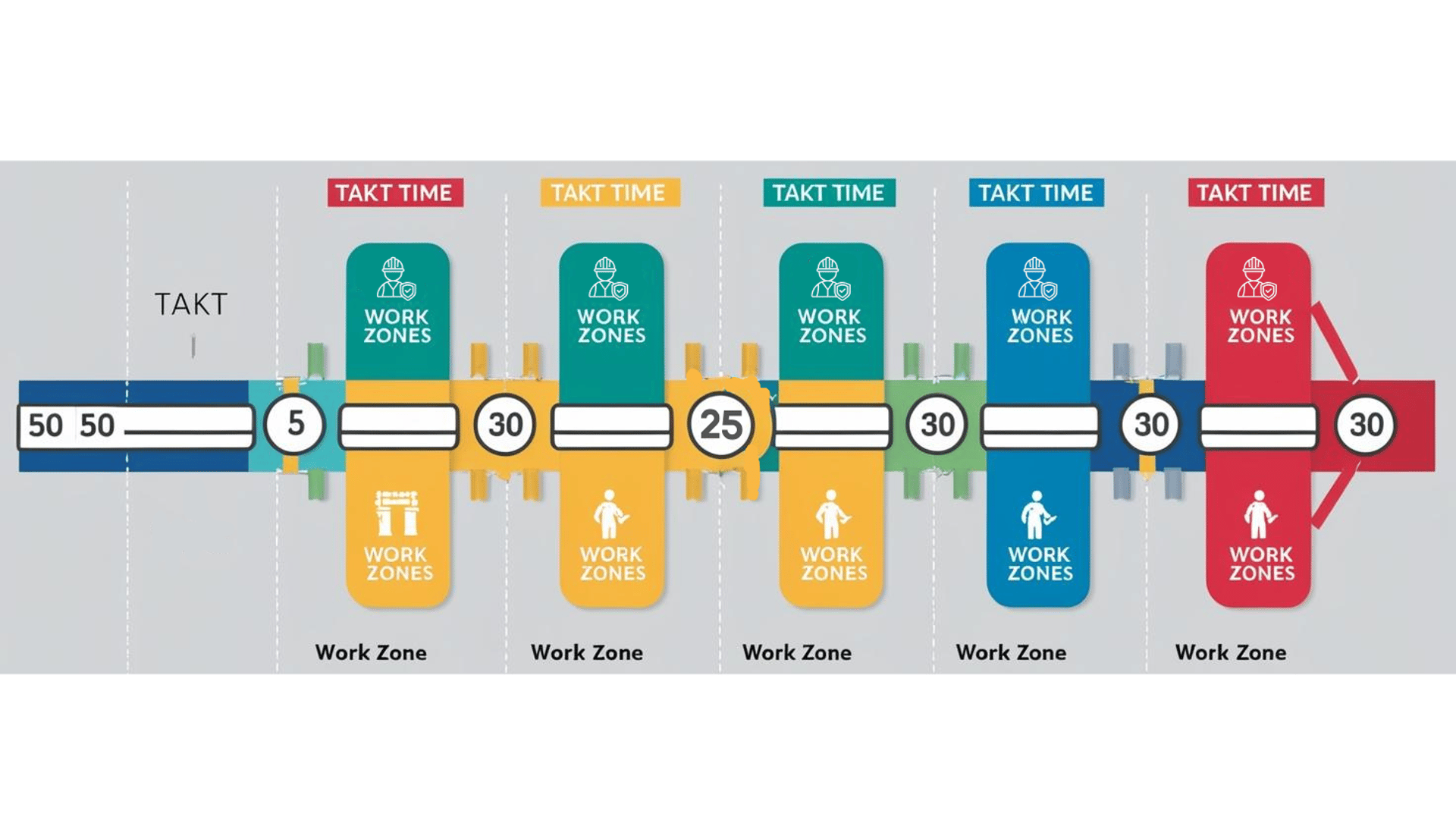
In the dynamic and ever-evolving world of construction, efficiency is key. One tool that stands out in streamlining project timelines and ensuring harmonious teamwork is Takt time. This concept, deeply rooted in Lean principles, is more than just a scheduling method—it's a philosophy for creating rhythm and predictability on projects.
What is Takt Time?


Want to Learn more about TAKT at these resources
Lean Construction Institute
The Lean Construction Institute's Takt Time resource page is a comprehensive guide for understanding and implementing Takt in construction projects. It offers valuable insights into how Takt Time facilitates rhythm and flow, enabling trade partners to work in synchronization and achieve greater efficiency. The page provides detailed explanations, examples, and tools for applying Takt principles to optimize schedules, reduce waste, and enhance collaboration.
The Lean Builder
The Lean Builder's Takt Planning resources provide an accessible and practical approach to understanding and applying Takt principles in construction. Through its blog posts and expert insights, this site offers valuable knowledge on how to create rhythm and flow in project schedules, enabling trades to work efficiently and cohesively. By breaking down Takt planning into digestible concepts and real-world applications.
Elevate construction
The Elevate Construction resources page is a valuable hub for professionals seeking to deepen their understanding of Takt planning and other Lean construction methodologies. It offers a comprehensive selection of tools, templates, and guides designed to streamline project workflows, enhance team synchronization, and improve overall project outcomes. With practical insights and solutions tailored to the complexities of modern construction projects, the site equips users with the knowledge and systems needed to successfully implement Takt planning and maintain a steady rhythm of production.
Takt Time Graph (Image source: lean construction Institute)
The Role of Rhythm in Construction
Imagine a construction project as an intricate dance. Every participant—whether a trade partner, project manager, or superintendent—has their unique role. Without a guiding rhythm, the dance could easily turn chaotic. Takt time provides that rhythm, aligning everyone on the project to a shared cadence. This approach minimizes interruptions, reduces work-in-progress (WIP), and enhances overall productivity.
How Takt Time Transforms Projects
Enhancing Predictability
Takt time introduces a structured schedule that enables teams to anticipate what happens next. This predictability fosters a sense of control, reduces downtime, and creates a steady workflow.Improving Collaboration
By aligning trades to a unified pace, Takt time fosters collaboration. Teams no longer work in isolation but coordinate efforts to ensure smooth handoffs and mutual support.Reducing Waste
Lean construction aims to eliminate waste, and Takt time is a powerful tool in achieving this goal. It ensures resources—time, labor, and materials—are used efficiently by synchronizing activities and reducing bottlenecks.Streamlining Handoffs
Effective handoffs between trades are crucial for maintaining momentum on a project. Takt time sets clear expectations for when and how work transitions between teams, minimizing delays and errors.ble change in Lean practices.
Takt time originates from the German word "Takt," meaning rhythm or beat. In construction, Takt time establishes a consistent pace for work, ensuring that tasks are completed systematically and trades move seamlessly through phases. By defining the interval at which work should be completed in each area, Takt time ensures that projects flow like a well-orchestrated symphony.
Implementing Takt Time
While the concept of Takt time is straightforward, its implementation requires careful planning and commitment. Here are some foundational steps to consider:
Define Project Zones
Divide the project into manageable zones based on the scope of work and the site layout. These zones become the building blocks for applying Takt time.Establish the Beat
Determine the Takt time by calculating the duration needed to complete work in each zone relative to the project timeline. The goal is to create a rhythm that balances speed with quality.Coordinate Teams
Align all stakeholders, from trade partners to project leaders, to the Takt plan. This involves clear communication, shared goals, and ongoing collaboration to stay on track.Monitor and Adjust
Projects are rarely static. Regularly review the Takt plan to ensure it reflects the current reality. Adjustments may be needed to account for unforeseen changes, keeping the rhythm intact.
The Benefits of a Takt-Based Approach
The impact of Takt time goes beyond schedules and timelines. It fosters a culture of respect, accountability, and shared success. Teams operating under a Takt system often report improved morale, clearer communication, and a greater sense of achievement as milestones are met seamlessly.
A New Standard in Construction
As the construction industry continues to embrace Lean principles, Takt time is emerging as a cornerstone of efficient project management. By focusing on rhythm and flow, it transforms how teams work together, ultimately delivering projects faster, with fewer resources, and to a higher standard of quality.
Incorporating Takt time into your next project could be the key to unlocking a new level of efficiency and collaboration. After all, when every element of a construction project works in harmony, the results are nothing short of extraordinary.
TAKT Playlist
Explore this video playlist about the TAKT Planning process


